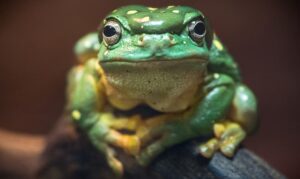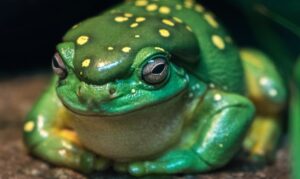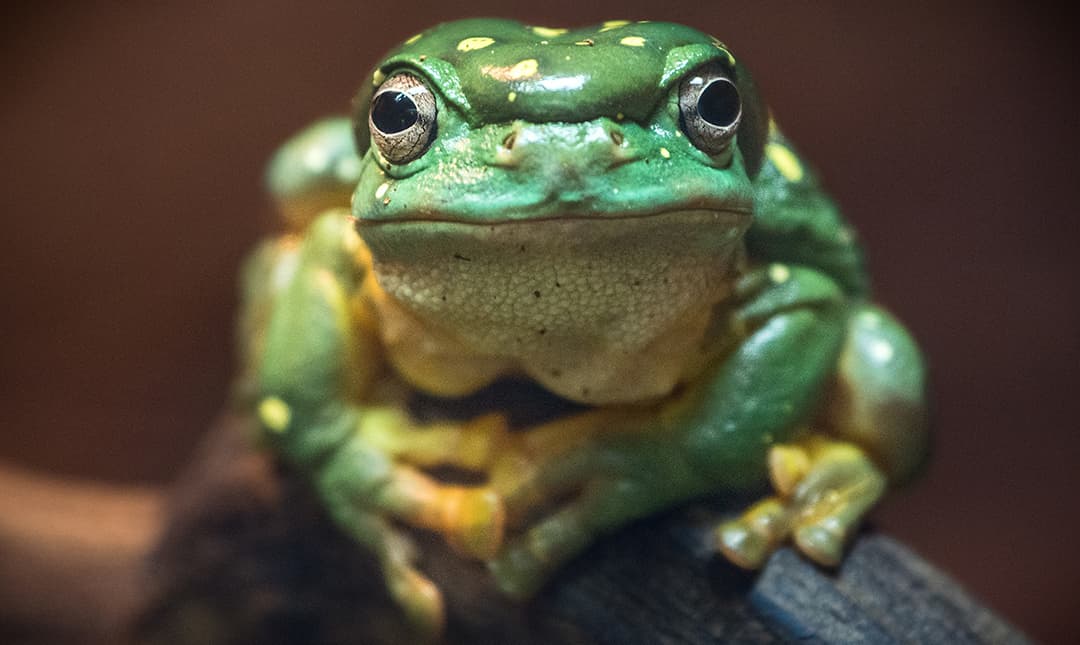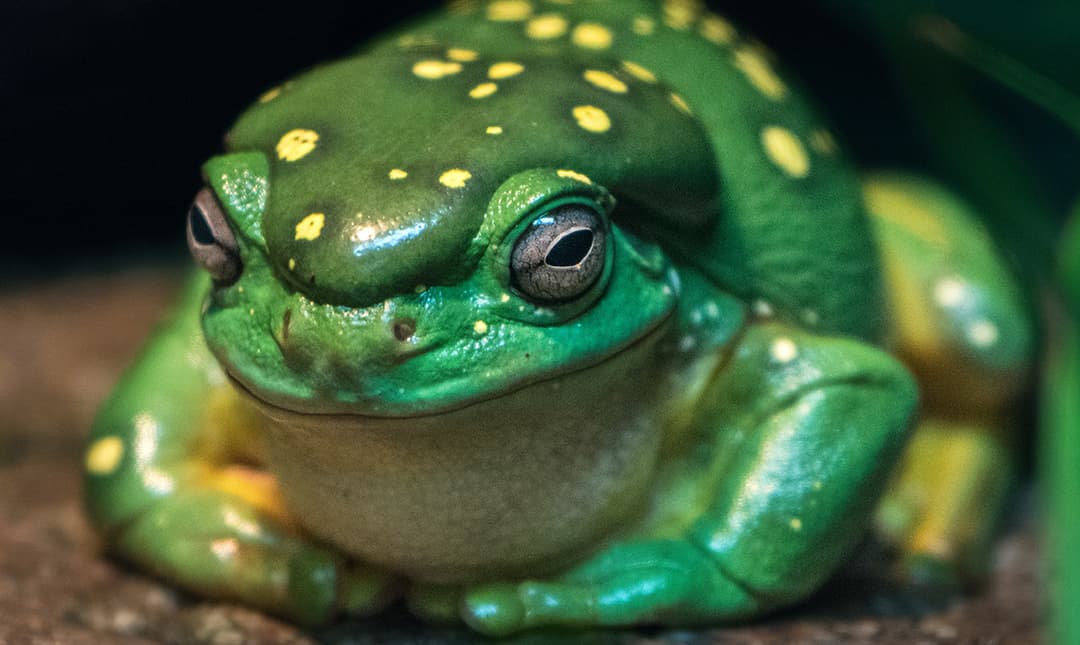About
This Australian frog has a secret weapon: a large, liquid-filled poison sac on the back of its head is filled with a bitter-tasting fluid that it uses to deter predators. It is the largest poison gland on any Australian amphibian. Defensive measures are necessary because small amphibians, like this frog, are on the menu of almost every predator in Australia, including larger amphibians, reptiles, birds, and mammals. The poison is not toxic to humans.
Like all tree frogs, the magnificent tree frog has long legs and extra muscles for climbing, however, it rarely spends time in trees. Instead, it uses large toe pads and a claw-shaped last digit to scale caves and rock crevices. A nocturnal lifestyle helps protect the frog from drying out. During the day magnificent tree frogs are commonly found near showers, drainpipes, ponds, and even in mailboxes looking for a cool, moist place to rest. During the rainy season, these frogs are often found on windowsills hoping to ambush insects attracted to the light at night.


HABITAT
Magnificent tree frogs live on the northwestern coast of Australia and are typically found on rocks and in crevices and caves.
DIET
This frog’s carnivorous diet includes insects, earthworms, spiders, and small lizards.
PHYSICAL CHARACTERISTICS
Just four inches long, this frog’s cryptic coloration ranges from olive to bright green with white-yellow spots on the back. The undersides of the feet and legs are bright yellow. Females are slightly larger than males.
Location within the zoo
You’ll find this animal in the Bite & Squeeze section of the LAIR. See Zoo Map.



